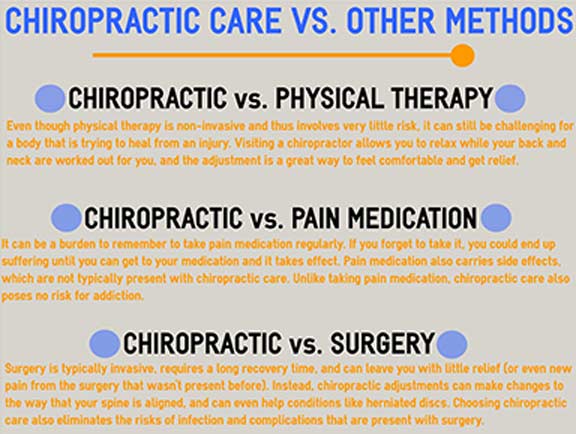Would You Such As To Find Out More Concerning The Methods By Which Cold Laser Therapy Reduces Persistent Discomfort?
Would You Such As To Find Out More Concerning The Methods By Which Cold Laser Therapy Reduces Persistent Discomfort?
Blog Article
Content Author-Newell Mcbride
You may have found out about cold laser therapy as a prospective solution for chronic discomfort alleviation, but exactly how precisely does it function? The idea of using low-level laser light to reduce relentless pain might appear intriguing, but does it genuinely deliver on its guarantees? Let's explore the scientific research behind cold laser treatment and whether it could be the key to managing your chronic discomfort properly.
Understanding Cold Laser Therapy
To understand cold laser treatment, you should realize the fundamental principles of exactly how this non-invasive treatment technique works. Cold laser therapy, also referred to as low-level laser therapy (LLLT), includes using low-intensity laser light to promote recovery at the mobile degree. This kind of treatment is often utilized to decrease inflammation, alleviate pain, and promote tissue repair work in numerous problems.
During a cold laser treatment session, a trained health care professional will use the laser gadget directly to the skin in the afflicted location. The light power discharged by the laser penetrates the skin and is taken in by the cells, where it's converted into biochemical power. This energy helps to boost mobile processes, boost flow, and decrease swelling, bring about discomfort alleviation and sped up recovery.
Cold laser therapy is a risk-free and pain-free therapy option that can be used alone or in combination with various other treatments to take care of chronic pain effectively.
Device of Discomfort Alleviation
Comprehending the device of discomfort alleviation in cold laser treatment entails comprehending how low-intensity laser light interacts with cellular processes to alleviate discomfort. When the cold laser is put on the skin, it permeates the cells and is soaked up by the mitochondria within the cells. This absorption triggers a series of responses that lead to raised production of adenosine triphosphate (ATP), the energy currency of the cell.
laser surgery to quit smoking increased ATP production enhances cellular feature, including faster cells repair and minimized inflammation.
Additionally, the laser light promotes the launch of endorphins, which are the body's natural pain relievers. These endorphins assist to block discomfort signals and improve the sensation of well-being.
In addition, cold laser treatment promotes vasodilation, boosting blood circulation to the afflicted area. This enhanced blood circulation brings much more oxygen and nutrients to the tissues, assisting in the recovering process and minimizing pain.
Efficacy in Chronic Discomfort Management
Cold laser treatment demonstrates considerable effectiveness in handling persistent discomfort by targeting underlying cellular procedures and promoting all-natural pain alleviation mechanisms. By guiding low-level laser light at damaged locations, this non-invasive treatment can promote the manufacturing of endorphins, which are the body's natural pain relievers. rheumatoid arthritis stamford helps in reducing inflammation and boost blood flow, helping in the relief of persistent pain symptoms.
Research studies have actually revealed that cold laser therapy is particularly efficient in dealing with problems such as joint inflammations, fibromyalgia, and neuropathy. The targeted light energy permeates deep into the cells, improving cellular feature and accelerating the healing procedure. This cause decreased discomfort degrees and improved variety of motion for people experiencing chronic discomfort.
Furthermore, cold laser treatment offers a safe and drug-free option for chronic pain administration, lessening the danger of unfavorable adverse effects frequently related to medications. Its ability to provide lasting alleviation makes it an important choice for those looking for lasting discomfort management options.
Conclusion
Finally, cold laser treatment provides an encouraging remedy for persistent discomfort relief by targeting cellular processes to decrease swelling, boost endorphin launch, and improve blood flow.
This non-invasive and drug-free technique offers lasting alleviation without the adverse effects of traditional discomfort medicines.
Think about checking out cold laser treatment as a risk-free and reliable choice for handling persistent pain problems such as arthritis, fibromyalgia, and neuropathy.
